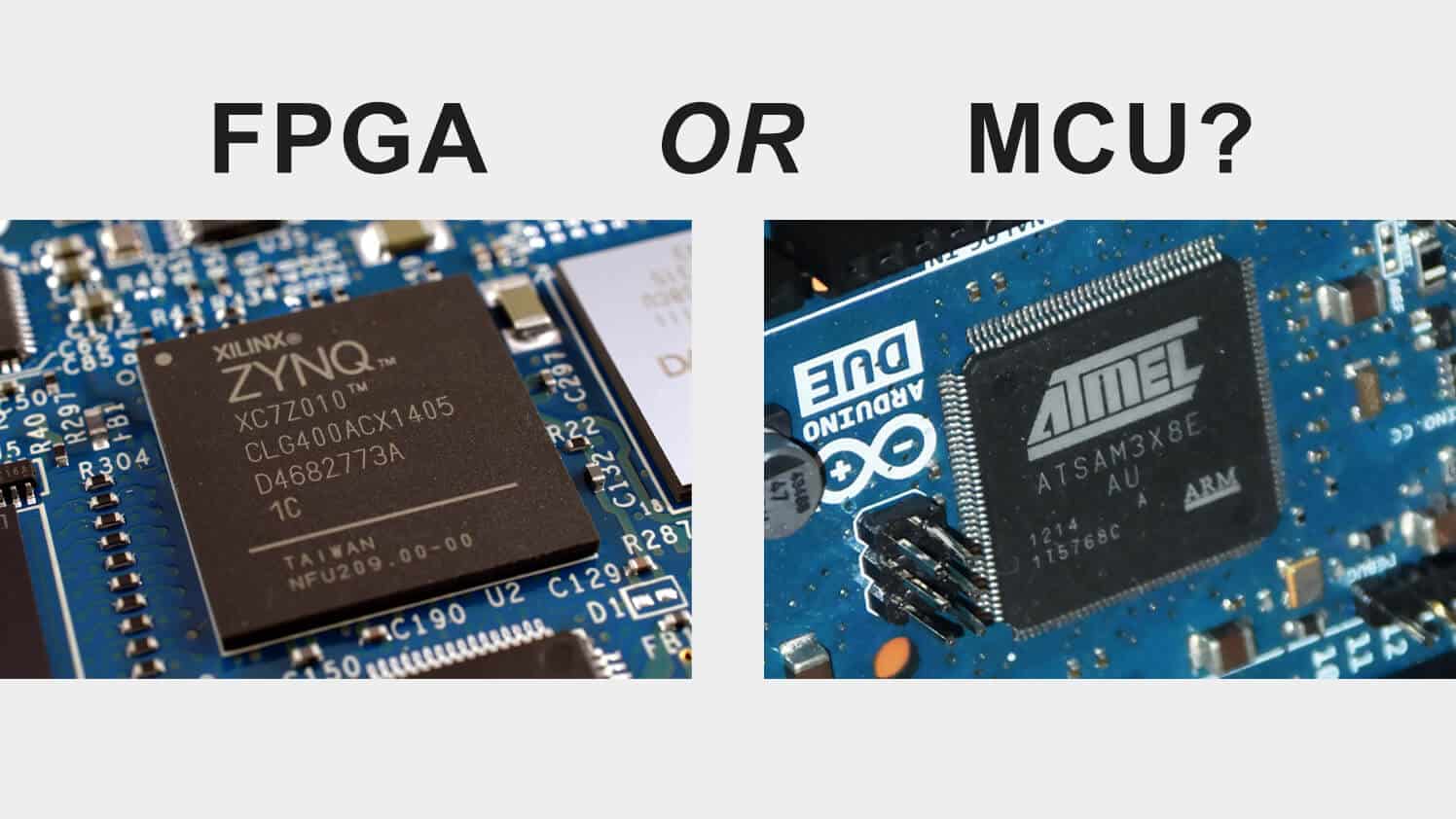
FPGA vs MCU: What is the difference between them?When to use them?
January 23 2025  194
194
Inquiry
Global electronic component supplier AMPHEO PTY LTD: Rich inventory for one-stop shopping. Inquire easily, and receive fast, customized solutions and quotes.
QUICK RFQ
ADD TO RFQ LIST
FPGA (Field-Programmable Gate Array) and MCU (Microcontroller Unit) are both popular components in electronics, but they serve different purposes and have different architectures.
FPGA (Field-Programmable Gate Array) and MCU (Microcontroller Unit) are both popular components in electronics, but they serve different purposes and have different architectures.

1. Architecture:
- FPGA (Field-Programmable Gate Array) consists of an array of programmable logic blocks that can be configured to perform specific hardware tasks. It is primarily a hardware device that you "program" by defining logic circuits.
- MCU (Microcontroller Unit) is a small computer on a chip that includes a processor (CPU), memory, and input/output peripherals. It runs software to perform control tasks, making it more of a general-purpose processor.
2. Programming Model:
- FPGA: You write the logic design using hardware description languages (HDLs) like VHDL or Verilog. This design defines how data moves through circuits and how the device behaves.
- MCU: You write software in high-level languages (like C or C++) to control hardware peripherals and perform tasks.
3. Flexibility:
- FPGA: Highly flexible in terms of hardware. You can create any custom digital circuit with logic gates, allowing for tasks like parallel processing.
- MCU: Less flexible in terms of hardware, as it's a fixed system (CPU + peripherals), but flexible in terms of software—you can write a variety of programs to control it.
4. Parallelism:
- FPGA: Can execute many tasks in parallel, as it’s custom-built for parallel hardware execution. This is ideal for tasks like signal processing or image processing.
- MCU: Works sequentially, executing one instruction at a time, which makes it more suitable for control applications but not for parallel processing tasks.
5. Performance:
- FPGA: Offers high performance for specialized tasks, particularly those that require parallel data processing or custom hardware logic.
- MCU: Performance is limited by clock speed and the processor’s architecture. However, it is well-suited for tasks that require sequential control, such as monitoring sensors or controlling simple devices.
6. Power Consumption:
- FPGA: Tends to consume more power due to its high parallelism and complexity, though newer FPGAs can be optimized for power efficiency.
- MCU: Generally low power, designed for battery-powered devices and embedded systems that need to run for long periods.
7. Cost:
- FPGA: Generally more expensive than MCUs due to its higher complexity and flexibility, especially for high-performance FPGAs.
- MCU: More affordable and comes in a range of low-cost options.
When to Use FPGA:
FPGAs are ideal when you need custom hardware acceleration or the ability to process tasks in parallel. You might choose an FPGA in the following scenarios:
- High-Performance, Parallel Processing: Tasks like digital signal processing (DSP), image processing, video encoding/decoding, and cryptography, where you need the ability to handle a large amount of data simultaneously.
- Custom Hardware Design: If you need custom, application-specific hardware that isn't easily achievable with general-purpose microcontrollers. For example, you can create custom data paths for communication protocols or design highly efficient accelerators for algorithms.
- Prototyping: If you're designing a custom circuit and need to test your hardware logic before committing to an ASIC (Application-Specific Integrated Circuit), FPGAs are great for rapid prototyping.
- Low-Latency Applications: Applications like network packet switching or high-speed communication systems, where latency is critical and parallelism is key.
When to Use MCU:
Microcontrollers are best for applications that require control, monitoring, and embedded system functionality. You might choose an MCU in the following scenarios:
- Simple Control Systems: For example, home automation, robotics, or simple consumer electronics, where you need to control devices, sensors, or actuators in a straightforward, sequential manner.
- Low-Power Devices: When power consumption is a key factor, such as in battery-operated devices, wearables, or IoT devices. MCUs can operate in ultra-low-power modes.
- Cost-Sensitive Projects: If you're working on a low-budget project that doesn’t require high computational power, MCUs are cheaper and readily available.
- Embedded Systems: If you need a small, dedicated processor for a task like sensor data collection, communication (like UART, I2C, SPI), or motor control.
- Prototyping with Software: If you need a straightforward control system where programming and software flexibility are more important than custom hardware logic.
Summary:
- FPGA is best when you need high-performance, parallel processing, or custom hardware for specific applications like signal processing or high-speed communication.
- MCU is best for low-cost, low-power, sequential tasks where you need software control over peripherals, sensors, and actuators.
Ultimately, your choice depends on the requirements of your project: If you need flexible, custom hardware with high performance, go for an FPGA. If you need a cost-effective, simple control system, an MCU is the way to go.
Populer Posts
A1425A-2PL84I
Actel
EP4SGX180HF35C4N
Intel
10M08SCM153I7G
Intel
1ST280EY2F55I2LG
Intel
5SGXEA9K2H40I3G
Intel
A3P030-2QN132
Actel
LFMXO5-100T-9BBG400C
Lattice Semiconductor
A42MX24-TQ176M
Microsemi Corporation
EP4CGX75CF23C8
Intel
10AX090R4F40E3SG
Intel
EP4CE115F23C7N
Intel
ICE40LP4K-CM81
Lattice Semiconductor Corporation
